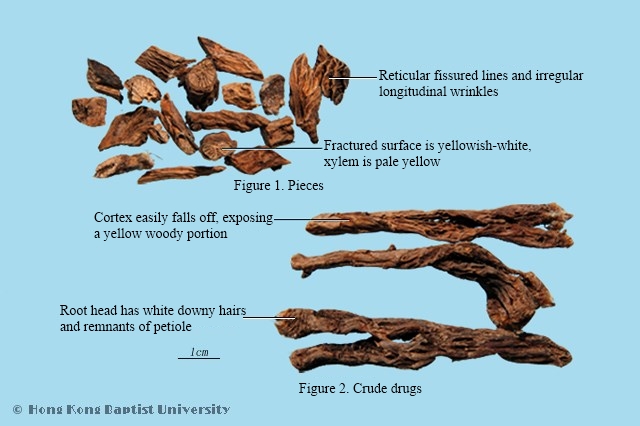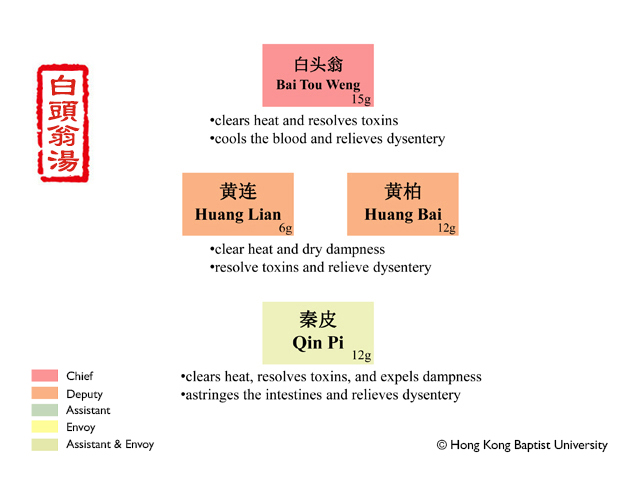Pulsatilla Decoction
Action:Clears heat, resolves toxins, cools the blood, and arrests dysentery.
Indication:This formula is indicated for heat toxin bloody dysentery. The symptoms are stools with pus and fresh blood, abdominal pain, abdominal urgency with rectal heaviness, burning sensation in the anus, thirst with a desire to drink, a red tongue with yellow coating, and a slippery, rapid pulse.

